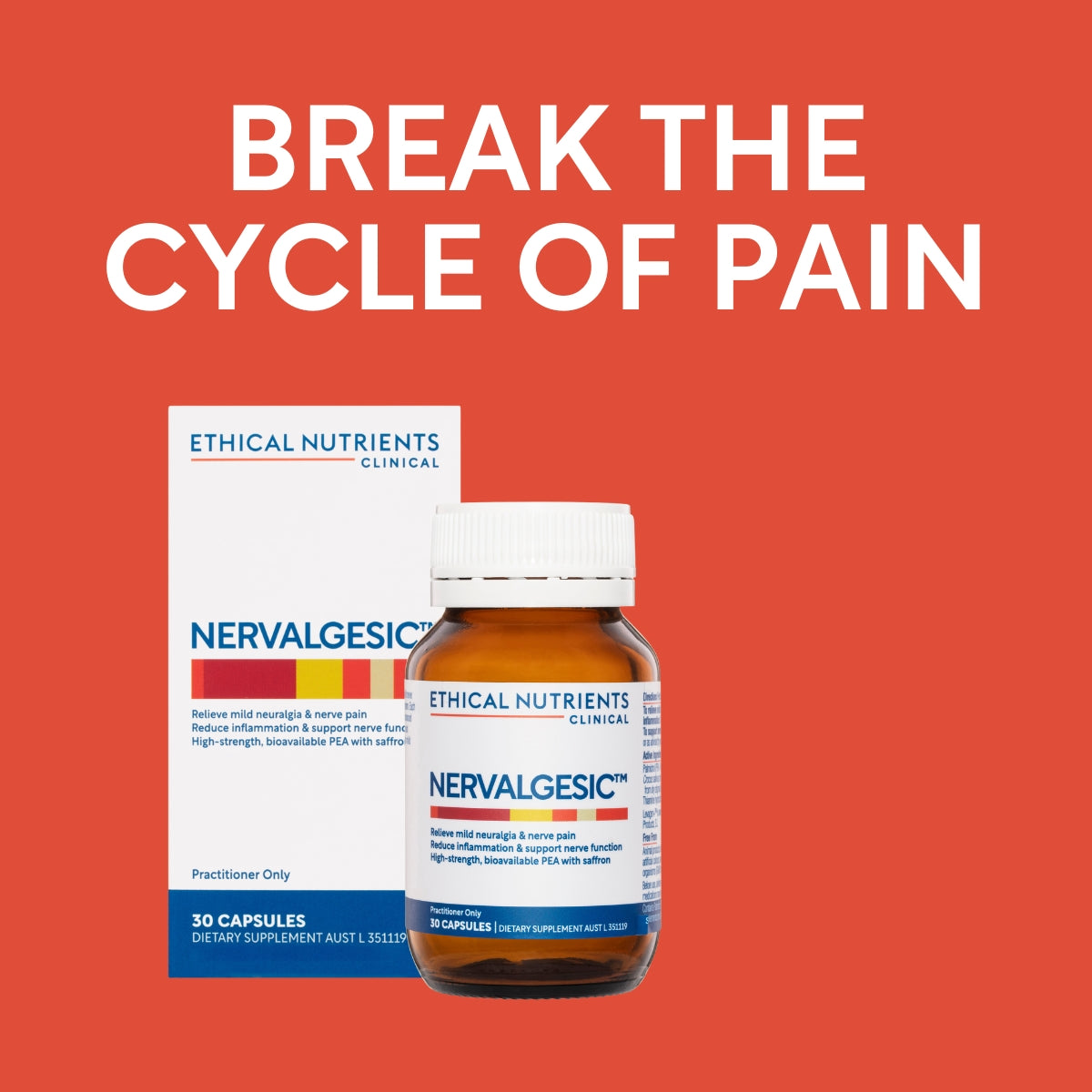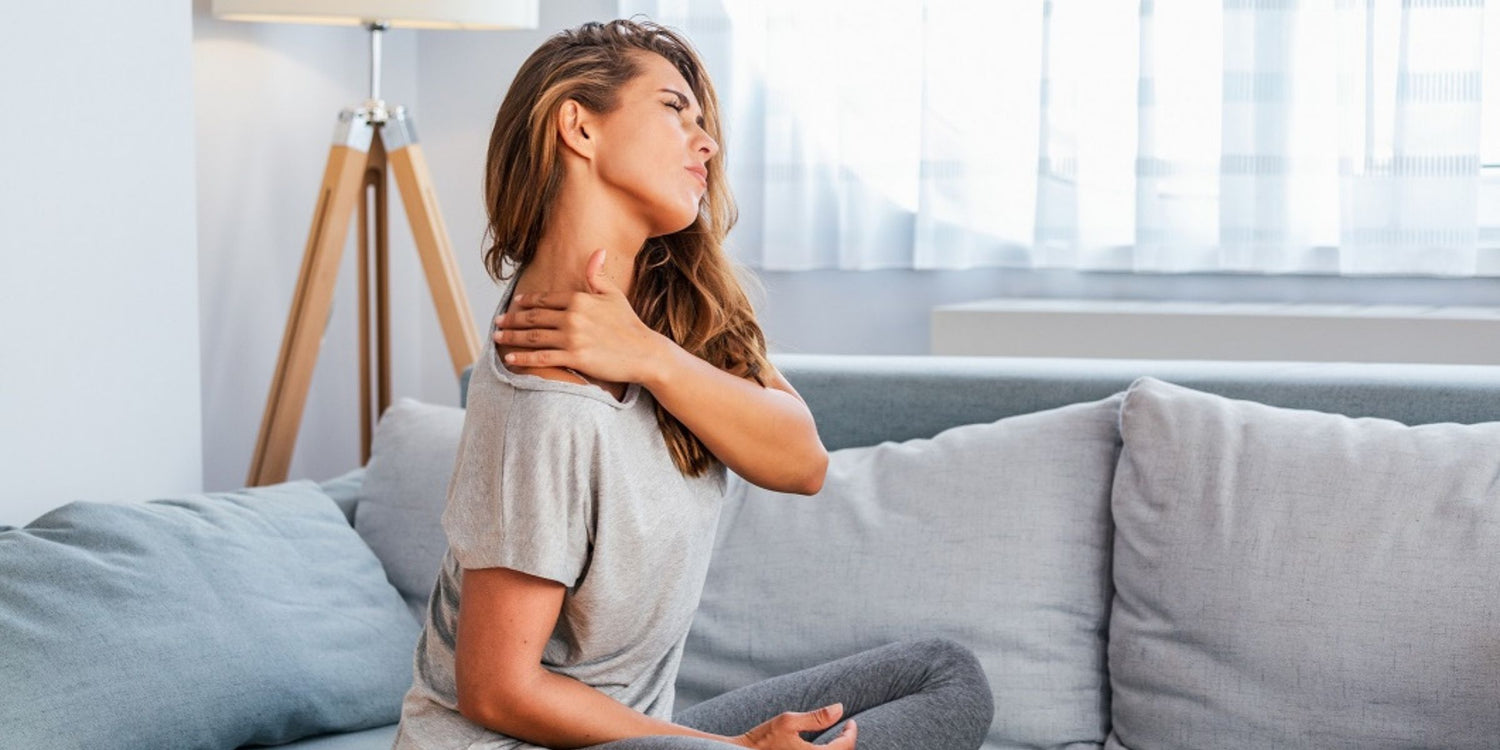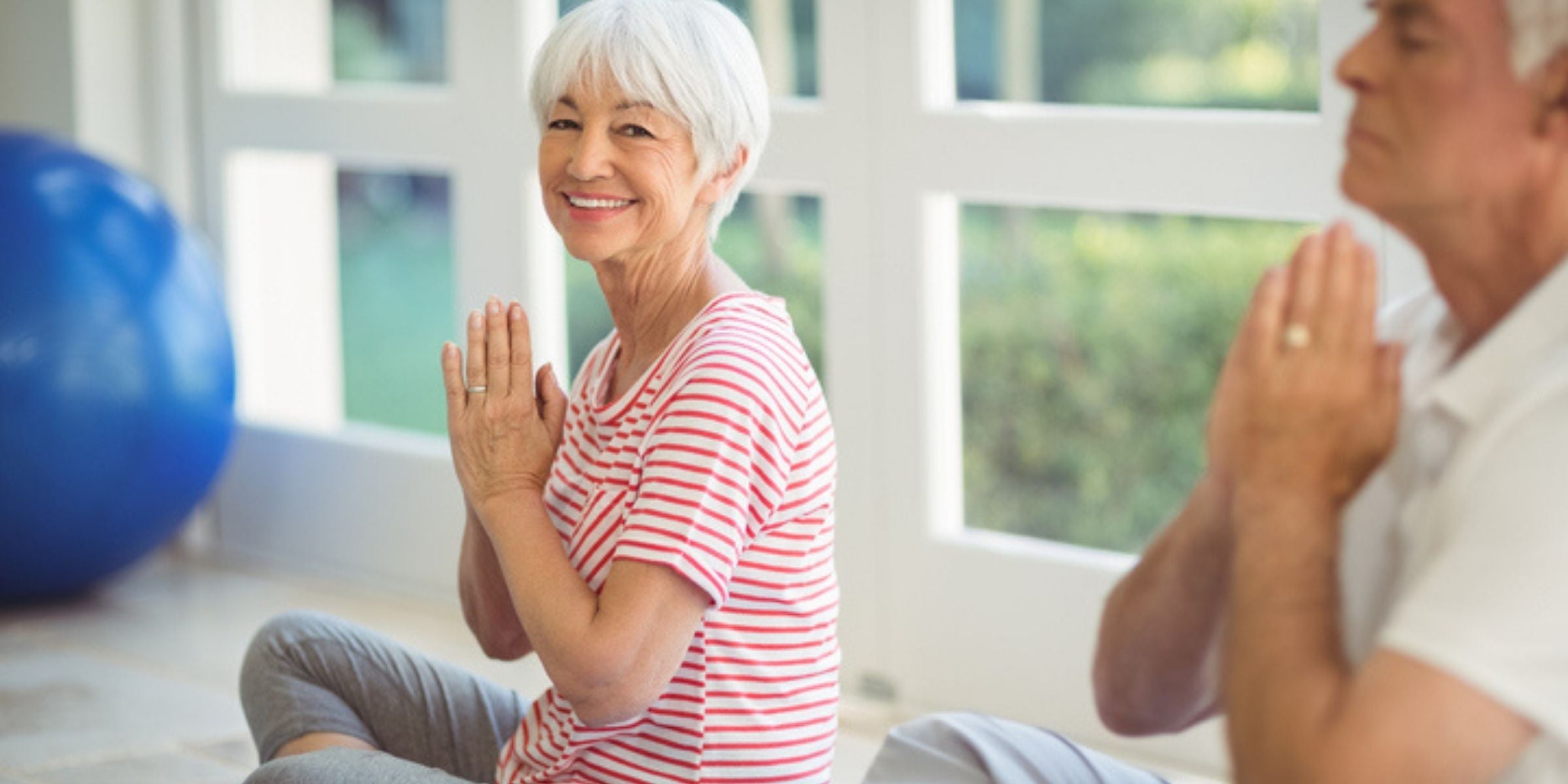Overview of nerve pain
Nerve pain (also known as neuropathic pain) is a type of complex and chronic pain affecting 1 in 20 Australians.1 This kind of pain is usually described as shooting, burning, stabbing, tingling, numbness, “pins and needles” or like an electric shock. Pain often comes on spontaneously without a trigger or is brought on by something that shouldn’t be painful like clothing lightly touching your skin or when brushing your hair. Nerve pain is notoriously difficult to manage in many cases. It can be debilitating and so agonising that it interferes with important parts of life like sleep, wellbeing, mood, work and exercise.
What causes nerve pain and inflammation?
There are hundreds of conditions that are linked to nerve pain. It may arise from problems in the central nervous system (the brain and spinal cord) or in the nerves that run from the central nervous system to the muscles and organs (the peripheral nervous system).2 Some of the causes of nerve pain include an injury to the nerves due to an accident or fall, poor blood supply to the nerves due to illness, trapped nerves such as carpal tunnel syndrome, infection or a side effect of certain medications. Nerve inflammation can also trigger nerve pain. For example, with shingles, which is caused by inflammation of a nerve due to a viral infection or because of a broken bone or slipped vertebral disc (sciatica).3
What happens in the body with nerve pain?
Pain is supposed to serve as a warning signal to the body. We feel the sensation of pain when pain receptors send electrical signals along nerves to the spine and brain, like if you hit yourself with a hammer or stand on something sharp. In people with nerve pain, affected nerves send false signals to the pain centres of the body causing shooting, stabbing, or electric shock-like pain, when there is no obvious cause or the response is exaggerated. It can come about spontaneously, without any trigger and can be unpredictable. Nerve pain is like an alarm that won’t switch off.
Tips to relieve nerve pain and inflammation naturally
Nerve pain management usually requires a holistic approach including treatments prescribed by a doctor/specialist, lifestyle changes, exercises and other therapies. Some of the ways to help relieve nerve pain and inflammation naturally include:
- Acupuncture with an experienced acupuncturist may assist with nerve pain intensity and relief in some people.
- Relaxation techniques such as meditation may help to reduce stress and make you feel more in control of your pain.
- Low impact aerobic exercise such as swimming, walking and cycling may increase blood flow and release endorphins.
- Sleep is crucial for the body to rejuvenate and repair and a good night’s sleep may make it easier to cope with pain. To support adequate rest, limit caffeine intake (especially after midday), drink a calming herbal tea such as chamomile, lavender, lemon balm or passionflower, try a 10-minute meditation while you’re lying in bed and turn off your TV and phone at least an hour before you intend to sleep, or use a blue light screen filter. Blue light can interfere with your melatonin levels, the hormone that makes you sleepy.
- PEA (Palmitoylethanolamide) is a cutting-edge natural ingredient that may assist with mild nerve pain and inflammation and help break the pain cycle. Saffron (Crocus sativus) and vitamin B1 can help support nervous system function.
References
- Henderson et al 2016, ‘Neuropathic and non-neuropathic chronic pain at GP encounters: Prevalence, patient characteristics, suffering and pregabalin use’, Aust Fam Physician, Volume 45 no 11, pp 783-786
- Healthdirect 2020, Nerve pain (neuralgia), Department of health and aged care, accessed 31 August 2022, <https://www.healthdirect.gov.au/nerve-pain>
- Better Health Channel 2015, Neuralgia, Victoria Department of Health, accessed 31 August 2022, <https://www.betterhealth.vic.gov.au/health/conditionsandtreatments/neuralgia>






